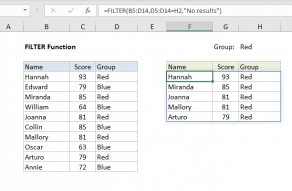Explanation
This example uses the UNIQUE function together with the FILTER function. Working from the inside out, the FILTER function is first used to remove any blank values from the data:
FILTER(B5:B16,B5:B16<>"")
The <> symbol is a logical operator that means "does not equal". For more examples of operators in formula criteria see this page.
FILTER returns an array of values, excluding empty strings:
{"red";"amber";"green";"green";"blue";"pink";"red";"blue";"amber"}
This array is returned directly to the UNIQUE function as the array argument. UNIQUE then removes duplicates, and returns the final array:
{"red";"amber";"green";"blue";"pink"}
UNIQUE and FILTER are dynamic functions. If data in B5:B16 changes, the output will update immediately.
Dynamic source range
Because the range B5:B15 is hardcoded directly into the formula, it won't change if data is added or deleted. To use a dynamic range that will automatically resize as needed, you can use an Excel Table, or create a dynamic named range with a formula.
Dynamic Array Formulas are available in Office 365 only.













